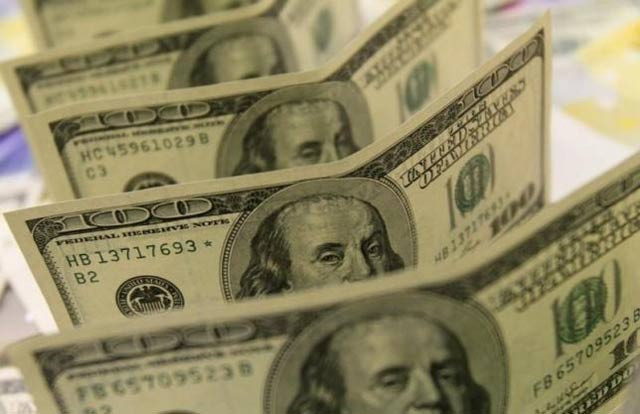External debt may swell to $70 billion by year-end
IMF’s projections are higher by $11.6 billion compared to earlier estimates

PHOTO: REUTERS
Pakistan’s external debt projections have been erratic since the beginning of the $6.2-billion International Monetary Fund (IMF) programme, creating uncertainty in debt management and indicating lack of reforms necessary to control ballooning debts.
An analysis of all IMF reports released in the past two years reveals the agency’s latest debt projections for fiscal 2015-16 are higher by $11.6 billion compared to the estimates given in its first report, which was the base for signing the three-year $6.2-billion bailout package in September 2013.
Pakistan’s debt situation not a pretty picture
The IMF had then projected Pakistan’s external debt would increase to $58.6 billion by 2015-16. Just two years down the line, the agency’s 9th review report estimates the external debt at $70.2 billion by end of the current fiscal.
Projections from one quarter to another vary by a whopping $10 billion. This has not only created debt management issues but also underscores the need to implement reforms to curtail debt.
In the last four months alone, the government borrowed $956 million from the commercial banks without competitive bidding to meet its foreign currency reserves related requirements.

In its September 2013 report, the IMF had given the country’s total public debt projections under ‘reform scenario’ and ‘no reform’ scenario. Under the reform scenario, the total public debt to Gross Domestic Product (GDP) ratio was to fall to 60.5% by end of 2015-16. In case of no reform scenario, the debt-to-GDP ratio had been projected at 63.6% by 2015-16.
Pakistan’s external debt set to grow to whopping $90b
However, the latest report has projected that by end of current fiscal year the debt-to-GDP ratio will be 65% -worst than no reform scenario despite both Pakistan and the IMF claiming that significant economic reforms have been implemented.
“The glaring inconsistencies in the IMF’s own reports indicate that no meaningful reforms have been implemented in the past two years,” said Dr Ashfaque Hasan Khan, former director general of finance ministry’s debt department.
Dr Ashfaq, who recently wrote an article on external debt and its implications on national security, said the wild gap between the two projections indicates the low quality of work by the IMF staff.
Last week, the IMF resident representative, Tokhir Mirzoev, was asked to explain the reasons behind increasing the external debt projections in the 9th review report to $70.2 billion – an increase of $2.3 billion over estimates given in a three-month-old report.
Moody’s report: International bonds weaken Pakistan’s debt affordability
He promised to give a response but till the filing of the story no response was received from the IMF.
The IMF has not yet included the impact of loans that Pakistan will obtain for implementation of China-Pakistan Economic Corridor (CPEC). Early this month, IMF’s mission chief to Pakistan Harald Finger said the IMF was waiting for the details of the CPEC arrangement.
During this period, no external unforeseen shocks have affected the economy, which could have been a factor for the haywire projections. Rather, the country has reaped advantages of the plunging global crude oil prices.
Under the carpet? Govt applies creativity to measure debt pile
For the next fiscal year 2016-17, the IMF’s latest projections are $13.2 billion higher than the projections it made in its first report. The IMF has now projected the external debt to grow to $72.1 billion or 63.2% of the GDP.
However, these are still lower than the $77.2 billion projections that the independent economists are making for next fiscal year.
Published in The Express Tribune, January 27th, 2016.














COMMENTS
Comments are moderated and generally will be posted if they are on-topic and not abusive.
For more information, please see our Comments FAQ